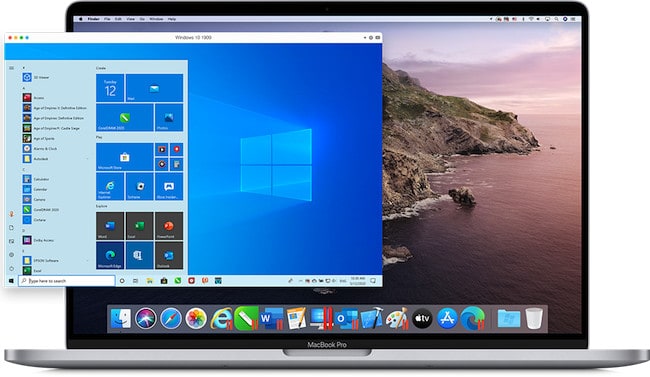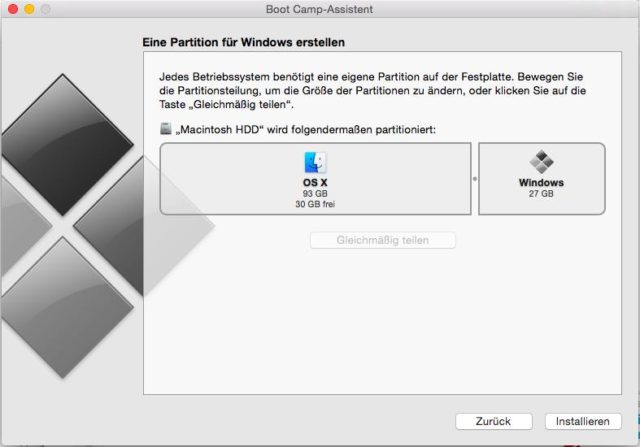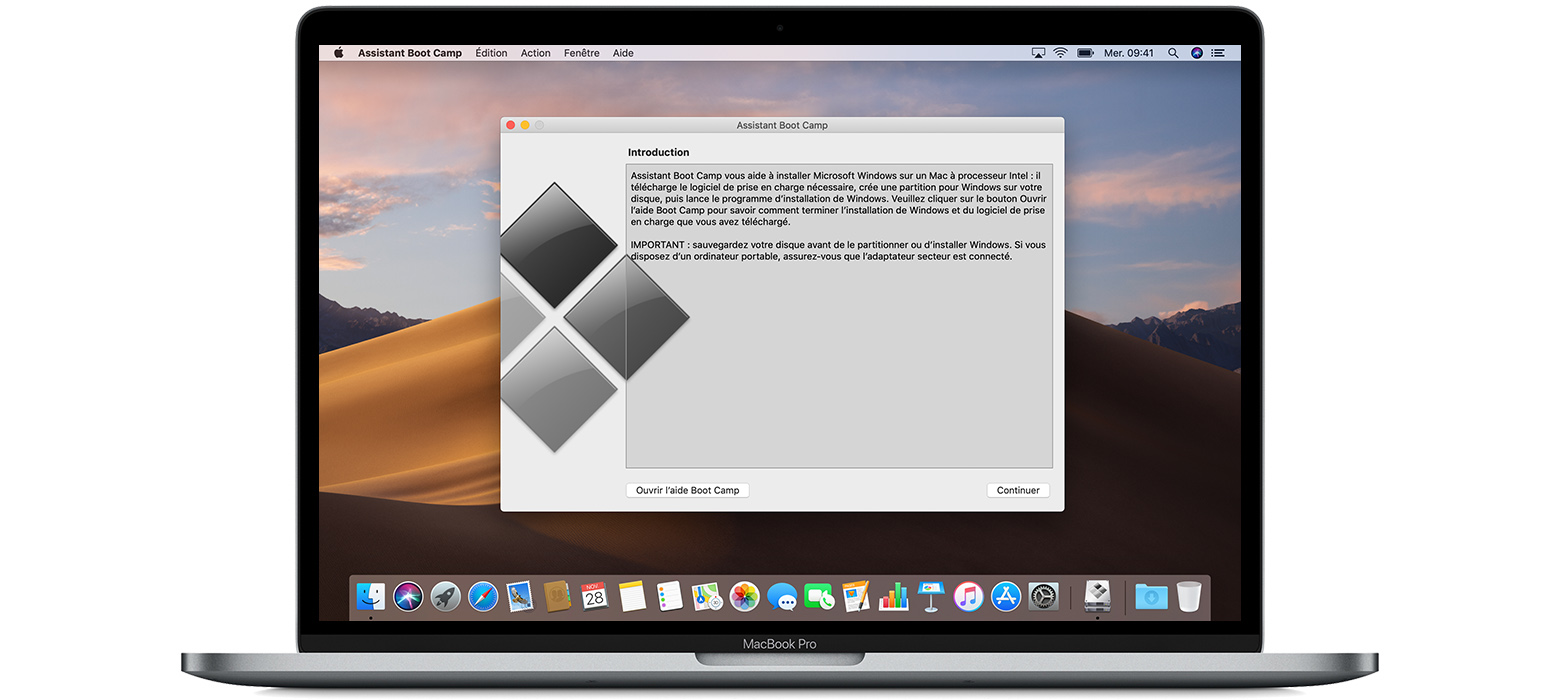Download the Windows support software. After preparing your USB flash drive, complete these steps: Make sure that your Mac is connected to the Internet. Open Boot Camp Assistant, which is in the Utilities folder of your Applications folder. From the menu bar at the top of your screen, choose Action Download Windows Support Software, then. To use BootCamp your hard disk must no have any partition. If you have one, first you should delete it, then recover that space for your main macOS (Catalina, Mojave), then start BootCamp assistant. With this procedure I installed Windows 10 in my MacBook Pro and MacMini. Oct 25, 2019 6:43 PM.
Big Sur is the official codename of Apple's latest macOS operating system and now it is publicly available. If you have upgraded to macOS Big Sure as a registered software developer for Apple, you can install Windows 10 on macOS Big Sur with the stock Boot Camp (A.K.A. Boot Camp Assistant) app. Assuming you are familiar with dual-boot on a Mac, the process should be quite simple to follow. Let's begin with a brief overview of dual-boot and how you can benefit from it.
What is Dual Boot?
I don't think so. I tried o install windows 10 with bootcamp, and The installation has succesfully ended. But when rebooting, the blue screen apeared, and the mac rebooted automatically (of course), and then the operating system not found icon (the folder with question mark) appeared, and then I reboooted to macos because I did not have other choices. Big Sur is the official codename of Apple's latest macOS operating system and now it is publicly available. If you have upgraded to macOS Big Sure as a registered software developer for Apple, you can install Windows 10 on macOS Big Sur with the stock Boot Camp (A.K.A. Boot Camp Assistant) app. Assuming you are familiar with dual-boot on a Mac, the process should be quite simple to follow. Step 2: Prepare your Mac for Windows. Boot Camp Assistant prepares your Mac by creating a new partition for Windows named BOOTCAMP and downloading the Boot Camp support software. Important: If you’re using a Mac notebook computer, connect it to a power source before continuing. On your Mac, open Boot Camp Assistant, located in /Applications.
Mac Catalina Bootcamp Windows 10
Dual-boot is a situation where two different operating systems are set up on the same computer. For example, if you install Windows 10 on a Mac computer , this is called dual-booting. It also includes installing two different versions of the same operating system on a single computer, such as macOS Catalina and macOS Big Sur on the same machine. It allows you to switch between the two operating systems when you start up the computer.
Benefits of Dual Boot:
Mac Catalina Bootcamp Windows 10 Free
- Run native apps of both operating systems.
- No need to convert incompatible files for different operating systems.
- Use legacy applications that are not compatible with the latest OS.
- Enjoy the best features of different operating systems, like Windows for gaming, macOS for programming, etc.
- Faster than Virtual Machine (VM) by utilizing the full potential of the same hardware.
Now that we have a clear picture of dual-booting, let's look at the specific case of how to install Windows 10 on a machine running macOS Big Sur using the built-in Boot Camp Assistant app.
How to Install Windows 10 on macOS Big Sur with Boot Camp
Not all Macs running macOS Big Sur are eligible to install Windows 10 as a dual boot option. Please check out the requirements and only to proceed if the requirements are fullfilled.

Requirement:
- 128GB of free space on your Ma (minimal at 64GB).
- A legit copy of Windows 10 file, which you can get from Microsoft website.
- A USB flash drive with 16G+ storage.
Once you're ready, please follow the steps shown below to install a copy of Windows 10 on macOS Big Sur with Boot Camp app.
Step 1: Open Launchpad and select Boot Camp Assistant from Other folder. Plug in the USB if prompted; Boot Camp will ask you for the space allocation, which you can provide per the above guideline. This is a permanent setting so make sure you allocate adequate space.
Step 2: The Windows installer will launch when your Mac automatically reboots after the partition is created. The next step is to format this partition for Windows. You only need to choose the partition with the name BOOT CAMP and hit the Format button. The rest of it should happen on its own.
Step 3: Complete the Windows installation by setting the language and other parameters just like in a normal clean install.
Step 4: The computer will restart again, but this time you'll see that it is running Windows. Next, you can install the Windows drivers and support software for Boot Camp by doing what's shown on the screen.
Follow the 4 steps above and you now have Windows 10 on macOS Big Sur Beta. To change from one OS to the other, you can use the Option key or Alt key while booting up. This will take you to the Startup Manager, where you can select the OS you want to use.
Common Issues of Boot Camp Windows 10 Install
Boot Camp app is not perfect and it is not working as promised even it is developed by Apple. There are several issues you may come across during the process.
The startup disk does not have enough space: The Windows partition takes at least 41 GB free space. So if the disk space on Mac is less than that, this task could not be completed successfully because of insufficient storage. This usually happens on Mac computer with 128 SSD. The solution is to add a new SSD and repeat the process again.
Your disk could not be partitioned: The partition that keeps Windows OS should be formatted to MS-DOS (FAT). The default file system for macOS is either HFS+ or APFS. If you saw this error, please format the Windows partition to MS-DOS (FAT)
An error occurred while copying Windows 10 installtion files. : There are two main reasons for this error. First, the Windows 10 ISO image is corrupted and some of the important files are missing. Second, the ISO image file is larger than 5GB. And FAT file system can only hold single file less than 4GB. To fix this, you need to download an old version of Windows 10 from Microsoft and upgrade the OS later when it is installed.

Alternative Solution: How to Install Windows 10 on Big Sur without Boot Camp
Boot Camp is the recommended tool for installing Windows on Mac devices. However, it is not the only solution. If Boot Camp does not work as expected, you can use UUByte ISO Editor instead, one of the best alternatives to Boot Camp. This reliable tool lets you create error-free Windows 10 installer USB on Mac. It will ensure that your Windows 10 installation on Mac goes without a hitch. Here's what you need to do:
Step 1: Once you have downloaded the ISO file from Microsoft's servers, install and launch UUByte ISO Editor on your Mac.
Step 2: Insert the USB drive and click the Burn module on the welcome page of UUByte ISO Editor.
Step 3: Browse and select your ISO file through the application interface and select the USB drive, making sure the correct drive is selected in the dropdown list.
Step 4: After assigning a name to the drive, click the Burn button at the bottom. Your bootable Windows 10 USB installer will be ready in a few moments.

Apart from being able to burn an ISO file to USB, UUByte ISO Editor also allows you to extract ISO files, compile and create ISOs, edit ISOs, and copy to ISO from a DVD or CD.
Conclusion
Installing Windows 10 on Mac with Boot Camp is quite easy if the requirements are met. So it is recommended at first place. However, it may failed for some reasons. At this time, you can install Windows 10 on Mac without Boot Camp app. The process is much more simple and has less issues.
UUByte ISO Editor is a great alternative to Boot Camp. Using this versatile application has several advantages. The tool is highly reliable with a very high burn success rate. It is thoroughly tested with various ISO files, on different computers, and with different media storage brands. It also gives you comprehensive tools to fully manage your ISO files, which is useful if you regularly deal with such disk image files. There is also a DMG Editor that offers the same functionality for Apple's disk image format.
Boot Camp Assistant User Guide
You can use Boot Camp Assistant to install Windows 10 on your Intel-based Mac.
Newer Mac computers use a streamlined method to install Windows on your Mac. To find out whether your Mac uses this method, see the “Learn more” section in the Apple Support article Install Windows 10 on your Mac with Boot Camp Assistant. If your Mac is an older model that requires an external USB drive, follow the instructions in Install Windows on your older Mac using Boot Camp instead.

What you need
The keyboard and mouse or trackpad that came with your Mac. If they aren’t available, use a USB keyboard and mouse.
A full-installation, 64-bit version of Windows 10 on a disk image (ISO file) or other installation media.
You can download a Windows 10 Disc Image (ISO File) from Microsoft.
Sufficient free storage space on your startup drive. For information about the amount of free space needed, see the Apple Support Article Install Windows 10 on your Mac with Boot Camp Assistant.
Before you begin
Before you install Windows, make sure you back up important files.
You can use Time Machine or any other method to back up your files. For information about backing up files, see Back up your files with Time Machine and Ways to back up or protect your files.
Perform the installation
On your Mac, do the following steps in order.
Step 1: Check for software updates
Before you install Windows, install all macOS updates.
On your Mac, log in as an administrator, quit all open apps, then log out any other users.
Choose Apple menu > System Preferences, click Software Update, then install all available macOS updates.
If your Mac restarts after installing an update, open Software Update again to install any additional updates.
Step 2: Prepare your Mac for Windows
Boot Camp Assistant prepares your Mac by creating a new partition for Windows named BOOTCAMP and downloading the Boot Camp support software.
Important: If you’re using a Mac notebook computer, connect it to a power source before continuing.
On your Mac, open Boot Camp Assistant , located in /Applications/Utilities.
At the Introduction screen, click Continue.
The system is checked for total available disk space. Older Time Machine snapshots and cached iCloud files are removed to make space for Boot Camp. This process may take a long time to complete (you can click the Stop button to skip this process).
If you have only one internal disk, choose the Windows ISO image, specify the partition size by dragging the divider between the macOS and Windows partitions, then click Install.
If you have multiple internal disks, follow the onscreen instructions to select and format the disk you want to install Windows on and to choose the Windows ISO image.
If you select your startup disk: You can create an additional partition for Windows. Specify the partition size by dragging the divider between the macOS and Windows partitions.
If you select an APFS-formatted disk: You can either create an additional partition on the disk for Windows, or erase the entire disk and create a partition for Windows. If you choose to create an additional partition, specify the partition size by dragging the divider between the macOS and Windows partitions.
If you select a non-APFS-formatted disk: You can erase the entire disk and create a partition for Windows.
If Boot Camp is already present on the disk you select, you also have the option to uninstall it.
Important: You can’t resize the partition later.
When this step is complete, the Windows installer starts.
Step 3: Install Windows
In the Windows installer, follow the onscreen instructions.
When the installation is finished, your Mac automatically restarts using Windows.
Follow the onscreen instructions to set up Windows.
Step 4: Install Boot Camp on Windows
After installing Windows, Boot Camp drivers that support your Mac hardware start installing.
Note: If the support software doesn’t install automatically, you need to install it manually. For instructions, see the Apple Support article If the Boot Camp installer doesn't open after using Boot Camp Assistant.
In the Boot Camp installer in Windows, follow the onscreen instructions.
Important: Do not click the Cancel button in any of the installer dialogs.
If a message appears that says the software you’re installing has not passed Windows Logo testing, click Continue Anyway.
You don’t need to respond to installer dialogs that appear only briefly during installation, but if a dialog asks you to install device software, click Install.
If nothing appears to be happening, there may be a hidden window that you must respond to. Look behind open windows.
When the installation is complete, click Finish.
After your Mac restarts, follow the instructions for any other installers that appear.
